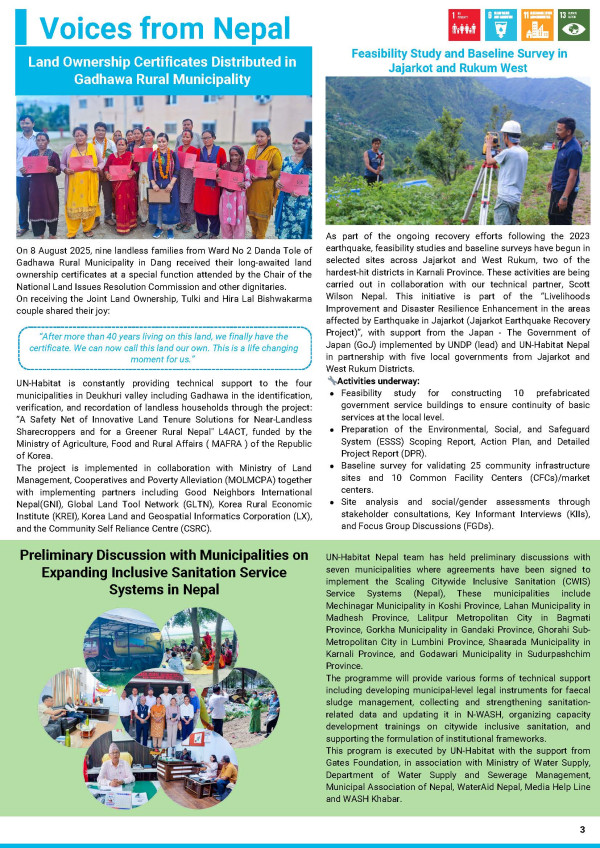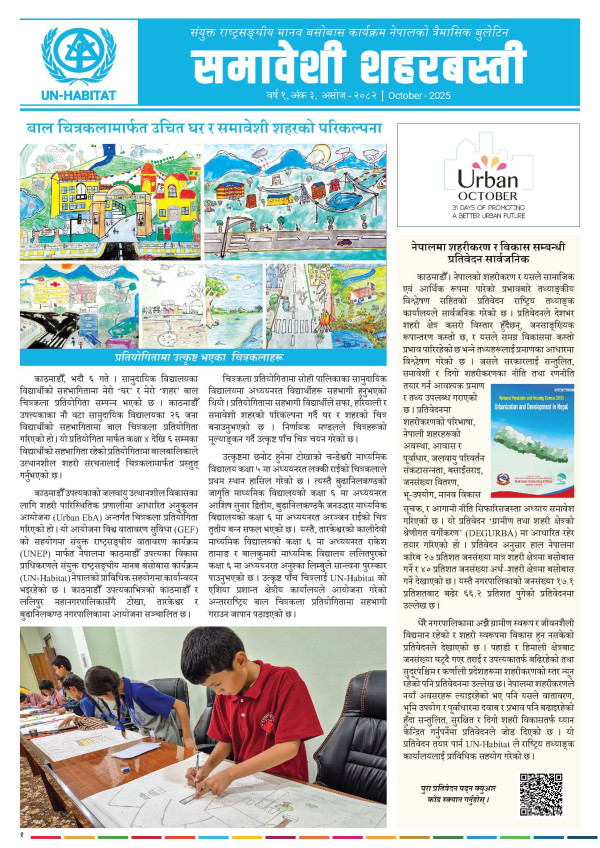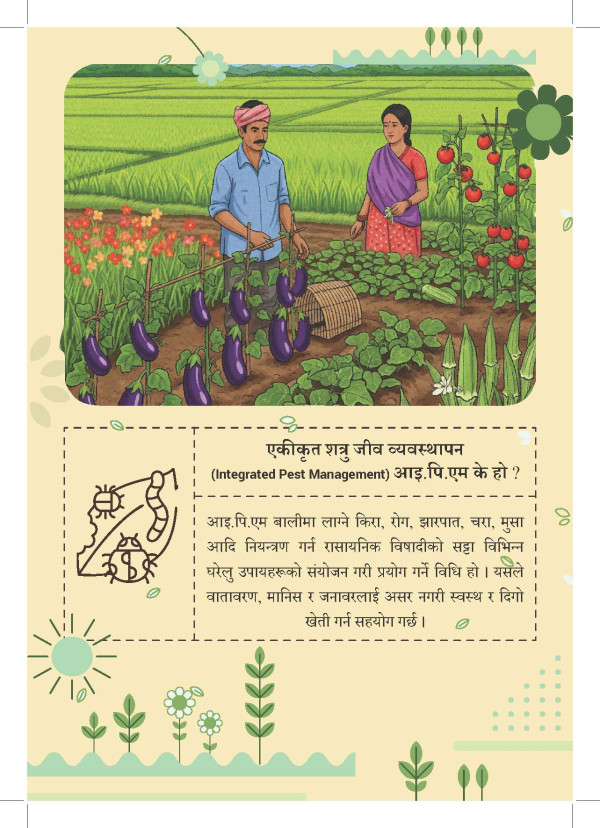Building Better Cities: Chandragiri Tests Inclusive Planning Tools

Chandragiri Municipality, Nepal | 9 May 2025
Chandragiri Municipality, in collaboration with the Ministry of Urban Development (MoUD) and with technical support from UN-Habitat, UNOPS, and Cities Alliance, organized an orientation and hands-on workshop on the "Gender and Climate-Responsive Step-by-Step Municipal Urban Planning Guideline." Over 50 participants attended the event, which was organized as part of the EU funded Cities 4 Women project.
The workshop brought together a diverse group of people, including Mayor Mr. Ghanashyam Giri, Deputy Mayor Ms. Basanti Shrestha, ward chairpersons, municipal executives, and section heads, as well as officials from MoUD, UN-Habitat, UNOPS, UPDC and the Cities Alliance. The event aimed to familiarize participants with the recently developed 8-step municipal urban planning guideline, which is designed to help municipalities integrate gender equality and climate resilience into their urban planning and budgeting processes.
Mayor Ghanashyam Giri outlined the municipality's long-term development vision at his opening presentation, explaining how it has been institutionalized thus far and highlighting the necessity of connecting future investments with strategic and inclusive goals. He acknowledged the Cities 4 Women team for their ongoing support and efforts to improve local development planning.
The technical session was led by UN-Habitat experts Om Dharananda Rajopadhyaya, and Kumar Dhamala, who presented the draft guideline and its structure. The publication is based on UN Habitat's Our City Plan Toolkit and has been thoroughly tailored to Nepal's local governance structure. Ms. Pragya Pradhan, Habitat Programme Manager at UN Habitat Nepal, stated that the 8-step approach with 25 activities was derived from a broader global framework (with 58 activities), modified through extensive consultations, workshops, group discussions, and expert inputs, and validated with the participation of local governments, MUAN, and MoUD.
The guideline is designed to help municipalities prioritize investments effectively across various developmental sectors. The guideline aims to help municipalities integrate urban planning into their five-year plans, in keeping with Nepal's existing seven-step planning process. Ms. Pradhan emphasized that while the guideline is envisioned as a five-year planning tool, municipalities can begin using it from any relevant phase or step or activity based on their current status and needs.
The program included hands-on testing of the Activity 11 from Step 4 in Phase 1, which focuses on prioritizing sectors and sub-sectors that advance the municipal vision. Participants in this practical exercise identified priority areas for investment while taking into account local needs and resource constraints, which offered them valuable insights into the participatory approach in municipal planning. The event was a timely contribution to Chandragiri Municipality's current budget planning process, encouraging reflection on existing priorities of the municipality.
Ward chairpersons appreciated the group exercise, saying it provided new perspectives on how to integrate planned and ongoing efforts with the municipality's long-term vision. They stated that such participatory techniques will improve existing practices and help create more informed, inclusive planning decisions.
Speaking on behalf of MoUD, Mr. Shyam Budathoki, Senior Divisional Engineer, explained that the guideline is in line with the process of preparation of municipality's Integrated Urban Development Plan (IUDP), supported by MoUD. He added that the guideline, once finalized, can be used as a practical resource for strengthening local planning throughout the nation.
Similarly, Mr. Dipendra Sharma, Advisor at UNOPS, underlined that the organized method had a strong connection with Nepal's 7-step planning process. He stated that, following field testing and refining, MoUD will be be taking the lead in disseminating the final version of the guideline throughout Nepal's municipalities, allowing for greater adoption of gender-responsive and climate-resilient planning tools.
Importantly, the feedback received from this workshop will shape up the final version of the guideline, ensuring that it is founded in local realities and is feasible for implementation. The workshop in Chandragiri represents a significant milestone in the Cities 4 Women initiative's objective to enable local governments to foster sustainable, inclusive, and climate-smart urban development throughout Nepal.





